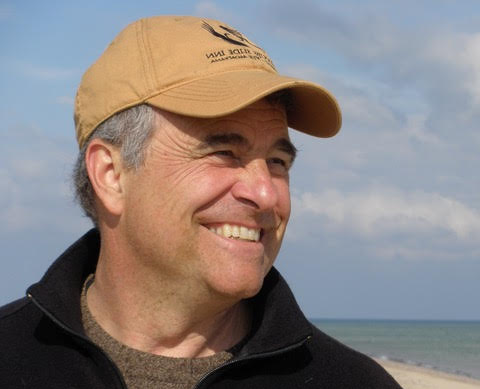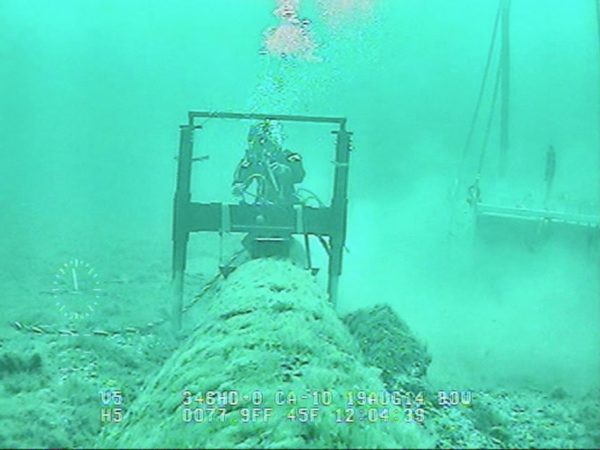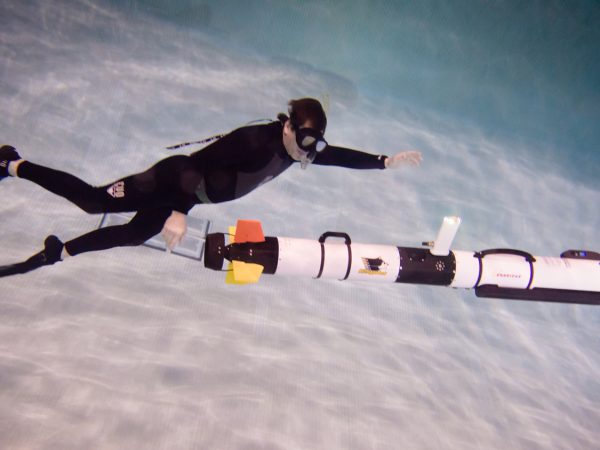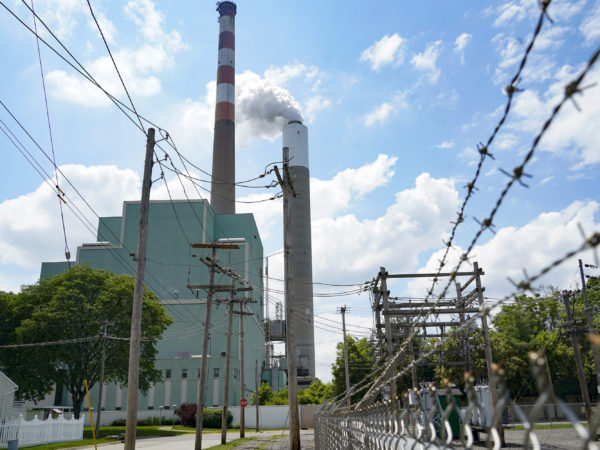
Jerry Dennis wasn’t seeking adventure when as a novice sailor he joined a veteran captain and crew to sail from Traverse City to the Atlantic Ocean. He was looking for a deeper understanding of the Great Lakes, but adventure found him.
Similarly, he wasn’t seeking notoriety when he wrote The Living Great Lakes: Searching for the Heart of the Inland Seas, which was based on the sailing adventure. Dennis is the author of a dozen nature-themed books but none more prominent than The Living Great Lakes that defied the odds and became successful beyond the region and any expectations he may have had.
Great Lakes Now recently spoke with Dennis on the release of the 20th Anniversary Edition that includes a new introduction by Dennis.
Dennis explains what he was “searching” for and shares why he reluctantly embraced the notoriety he received. He recounts the reactions accumulated from a culturally and politically diverse group of readers. He also shares his optimistic and cautionary views of the future of the Great Lakes.
Great Lakes Now: The publisher said on the release of The Living Great Lakes 20 years ago that the book is a work of “history, science and memoir.” The subtitle is “searching for the heart of the inland seas.” Can you elaborate on the subtitle?
Jerry Dennis: I wrestled with that because looking for the heart of something is pretty whimsical. I was looking for the identity of the Great Lakes and I knew that it would be a tough job. I knew how huge and complex the lakes are. But I was determined to get at their essence, what it is that makes them unique.
That was the driving force through the book and you might notice where I address that directly. That I needed to dive into the lake and swim to the bottom to start to understand it. Gradually, I felt I got as close as I could. The search was the pleasure and what I discovered along the way that gave me the most satisfaction.
GLN: Isn’t it also part adventure? You readily admitted that you had no sailing experience yet were able to talk your way on as crew for the Chicago to Mackinac race. Then you similarly served as a crew member on the (200 ton) Malabar sailing from Traverse City through the Great Lakes to the Atlantic Ocean.
JD: It definitely was adventure but I didn’t necessarily go looking for adventure. We all know that adventure finds us at some point. I happened to be at the right place at the right time and let serendipity come. Suddenly I found myself in storms or with interesting and colorful people and listening to their stories. It was about keeping my eyes and ears open and writing it all down as fast as I could.

Photo courtesy of St. Martin’s Griffin
GLN: In the introduction to the 20th Anniversary Edition, you say on the book’s original release your life changed. You no longer had the luxury of sitting at your desk “tinkering with sentences.” You were suddenly in demand to speak at multiple venues across the region. Were you expecting that? How do you account for the book’s popularity?
JD: No, I wasn’t expecting the notoriety and I’ve never known what to expect from any of my books.
The book launched quietly and the publisher saw it as a regional title. Then it started to gain traction because of word of mouth and suddenly the phone started ringing and I found myself invited to speak to groups of all sizes from Minnesota to New York state.
That quickly became a part of my life as once a week I was on the road to speak about the lakes. I had mixed feelings at first but then came to embrace it because I recognized that I was reaching people and they were interested. They wanted to know about the lakes and what they could do to protect them. So I felt a responsibility to answer that call.
GLN: After the sailing journey, as you continued to travel in the Great Lakes region you said “people of every age, social group, and political leaning” shared their stories with you. Did a common theme emerge from those diverse groups or were they all over the place?
JD: The stories were all over the place. I did pay special attention to the fact that the stories were coming from every persuasion. Especially from every political leaning.
I grew up in the 1960’s fully aware that the environmental movement was a politically left-driven movement. Even at an early age I worried about that because you’re only reaching half the people, if that. And maybe we should approach the environment in a non-partisan way. Which is pretty much how I wrote the book.
I was pleased to find out that a lot of people who might vote differently from me enjoyed the book, were inspired by it and have gone on to do things to protect the lakes. That was important and I paid special attention to those stories.
There were also amazing, funny and heartwarming stories of people’s engagement and involvement. They loved to talk about the adventures from sailing in storms to fishing, walking beaches, collecting stones and more. I heard hundreds of stories.
GLN: Has the tone of the stories shifted in those 20 years?
JD: I noticed a distinct shift about 10 years ago. People were more concerned and I don’t know how to account for that except it has to do with the internet and media organizations like yours making news more readily available about the Great Lakes. When it was a network news world, people only heard about the Great Lakes when the Cuyahoga River caught fire or the Edmund Fitzgerald sank so people had a distorted view of the lakes.
I started to notice especially on college campuses people were a lot more informed and have become more passionate about environmental and legislative issues in ways they could have a hand in protecting and restoring the lakes.
GLN: On policy related to the Great Lakes, a lot has transpired since the book was published. In 2004 President George W. Bush declared the lakes a “national treasure” and signed an executive order that started the process that led to federal support for restoration. The Great Lakes Compact was enacted in 2008 minimizing the risk of large-scale diversions of water to arid areas. The success of those endeavors will be determined by future generations. Does the region – politicians, not-for-profit environmental groups – still have what it takes to do big things to preserve the lakes? Or is it resting on its laurels?
JD: Good question. When I wrote the book 20 years ago there were only a handful of environmental groups working on Great Lakes issues. Since then, a lot have emerged and they’re doing great work. And they’re active and influential and no doubt, they had a hand in securing the approval of the restoration initiative and they’ve got the ears of legislators.
We don’t know what future generations will say but I think there will be evidence that good came out of this. That the restoration initiative created a stronger infrastructure, protected shorelines and marshes and created jobs.
It remains to be seen if the Great Lakes Compact will be very effective at preventing water withdrawals. Great Lakes policy adviser Dave Dempsey is a little pessimistic about that and he is very well informed. I share some of his skepticism and worry. We know what people are capable of and how the rules can be bent by people with power and money. I’m cautiously hopeful but I wouldn’t say I’m optimistic.
GLN: Concern about climate change was emerging in 2004 but “its causes were still being debated,” you wrote in the introduction. You cite the 2021 flooding in metro-Detroit as a climate change outcome. While we’re playing catch up on climate initiatives and spending billions of dollars to invest in EV’s and renewable energy, are we doing enough on mitigation and resilience?
JD: Probably not. We tend to be reactive. Everyone is panicked when lake levels are high and then again when levels are low. It’s roughly a ten year cycle. What people are missing is that the highs are getting higher and the lows, lower and that’s a real cause for concern.
People do what drives them at the moment. If it isn’t convenient for them or affects their bottom line, they’re willing to let it go. Which is why we have these patterns like Lake Erie where it became terribly polluted, then cleaned up facilitated by the Clean Water Act and the Great Lakes Water Quality Agreement which made a huge difference. Now algal blooms are a problem again caused by agricultural pollution.
I don’t know what it will take for people to get permanently involved and to care deeply enough to adjust their lifestyles to keep the environment clean.
GLN: In the book’s closing pages you wrote in 2004 that the lakes have changed much in the last hundred years and “the greatest changes might be yet to come.” How do you see the future of the Great Lakes in the next 20, 50 or even 100 years?
JD: There are lots of reasons to be concerned. You know, all the computer models suggest that climate migration will have more of a major impact and one of the places where people will want to live is the Great Lakes watershed.
We already see what’s happening with our crowded cities with sewage and stormwater systems and how often they overflow during storm events. And storm events are increasing in frequency and severity. That will create more runoff entering the lakes. There will be more pressure on the lakes, no doubt. We can only hope that when people come they’ll be willing to appreciate the lakes and defend them. But it’s hard to look 50 or 100 years into the future and not be worried.
GLN: Final thoughts? Something important for the public to know?
JD: Don’t take the Great Lakes for granted. They are the greatest freshwater bodies on Earth and are literally priceless natural resources and wonders on a level of any of the natural wonders of the planet.
The 20th Anniversary Edition of the Living Great Lakes with a new introduction by Jerry Dennis will be released on May 14. More information here at St. Martin’s Griffin.
Catch more news at Great Lakes Now:
Line 5 activist group wants Gov. Whitmer to “be an advocate” for shutdown
International nuclear energy expert questions Michigan’s Palisades restart
Featured image: Portrait courtesy of Jerry Dennis




